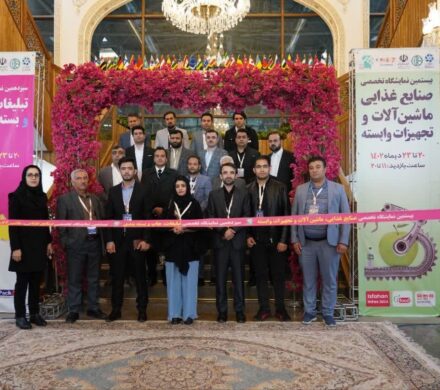 One of the sustainable strategies of the commercial sector based on the Isfahan province territorial planning document in 2018
One of the sustainable strategies of the commercial sector based on the Isfahan province territorial planning document in 2018
According to the territorial planning document of Isfahan province in 2018, the following are the strategies of the commercial sector:
- Effective management of market supply and demand
- Creation and expansion of special industrial zones for processing and re-export in special economic zones of the province
- Supporting branding, identification and identification of the products of the province
- Effective management of Isfahan’s non-oil import and export sector (development of exports of goods and export services)
- Effective management in the internet business space
- Completion and development of the value chain
- Expansion and strengthening of storage capacities (cold storage, silos and warehouses) in agricultural production hubs and centers of the province and links between production and consumption centers
One of our strategies according to the studies of Isfahan province land survey in 2017
According to the land survey studies of Isfahan province in 2017 from the plan and budget organization of Isfahan province and according to the report of the fifth development program, Isfahan province is one of the top ranks of industrial, mineral and commercial development in the country, which is due to the existence of potential advantages. and actual economic and having 9099 active industrial units with an investment amounting to 4.486,165 billion rials and employment equal to 676,242 people, it has occupied the first place in capital and the second place in the number of employment of active industrial units in the whole country. .
In terms of having 8,663 semi-finished industrial plans (establishment and planning and development permits) with an estimated investment of 1.180,421 billion Rials and an expected employment of 578,272 people, respectively, with a growth of 49% and 128% compared to the beginning of the fifth development plan It is the first country in terms of capital and employment, and with a growth of 38%, it ranks second in the number of projects.
The presence of 11% of the country’s industrial workshops in the province is one of the characteristics of the province’s industry sector, and it can be said that Isfahan is the most industrial province of the country.
With 78 industrial towns, Isfahan ranks first in the number of industrial towns in the country. With 12,000 hectares of industrial towns and areas, Isfahan ranks first in the country in terms of the number and land.
In the agricultural sector, despite the severe drought and the fact that there is only 2.4% of the country’s arable land in Isfahan province, more than 6% of agricultural products are produced in this province. The share of employment in the agricultural sector in Isfahan is 170 thousand people.
Isfahan province has the first rank in milk production and the second rank in chicken meat production.
Isfahan Scientific and Research Town was the first organization to establish growth centers and science and technology parks with 11 growth centers in 2014, and this town has the first place in terms of size and the second place in the country in terms of the number of companies and investment volume.
The provinces of Isfahan, Tehran and Central have the highest ranks in the country in terms of benefiting from the facilities and facilities of the health sector and the health industry.
After Tehran, Isfahan province ranks second in the country in terms of economic and social indicators.
In this comprehensive research, 53 parameters in different socio-economic fields that can affect the development of the province have been measured and evaluated.
In the current research, the variables are divided into two general categories:
1- development variables
2- Basic social variables
1- In development variables, the following indicators are considered:
- Average annual food and non-food expenses of a rural household and an urban household
- The ratio of annual food expenses to non-food expenses of an urban household and a rural household
- Average annual income of a rural household and an urban household
- The unemployment rate
- Burden of burden
- The percentage of workers in the service, industry and mining sectors
- illiteracy rate
- The percentage of the number of mines in operation by province by country
- The number of workers in the mining sector
- The production value of the mining sector
- The yield level of crops (grains, legumes, industrial products, vegetables, vegetable products, fodder products and others)
- Per capita value of production of industrial workshops
- Per capita added value of industrial workshops
- Per capita value of milk production
- Red meat production per capita
- Poultry production per capita
- Egg production per capita
- The percentage of people covered by urban support complexes to the urban population
- The percentage of people covered by rural support complexes to the rural population
- The number of industrial units employing more than 100 people
- The percentage of the number of livestock units in the province to the whole country
- The number of household electricity subscribers per 100 people
2- In the variable of infrastructure and social facilities, the following indicators are included:
- Urbanization coefficient
- settlement dimension
- Literacy rate of women
- Literacy rate of the rural population
- Literacy rate of the urban population
- Employment rate
- The ratio of population to the number of sports fields
- The ratio of population to the number of sports halls
- Number of students per 10 people
- Capacity of cinemas
- The ratio of population to the number of books in public libraries
- Specialist doctor per capita per 10,000 population
- Per capita dentist per 10,000 population
- Hospital bed per capita per 10,000 population
- The number of hospitals per 10,000 people
- The number of rural health centers per 10,000 rural population
- The number of urban health centers per 10,000 people
- The number of social security insured per 100 population
- Relative density of main roads
- Relative density of secondary roads
- Percentage of commercial and industrial gas consumers to total consumers
- Percentage of villages with electricity in the province
- The ratio of population to the number of telephones in residential units
- The percentage of cultivated area of agricultural products to the area of the province
- The number of workers in industrial workshops
- Phone penetration rate (total population)
- Phone penetration rate (urban population)
- The average number of employees in research affairs per 10,000 employed people
- The average number of full-time researchers per 10,000 working people
- The percentage of each province’s ability of water resources
- Per capita bank deposits in each province of the country
Ranking table of provinces in terms of development indicators and indicators












